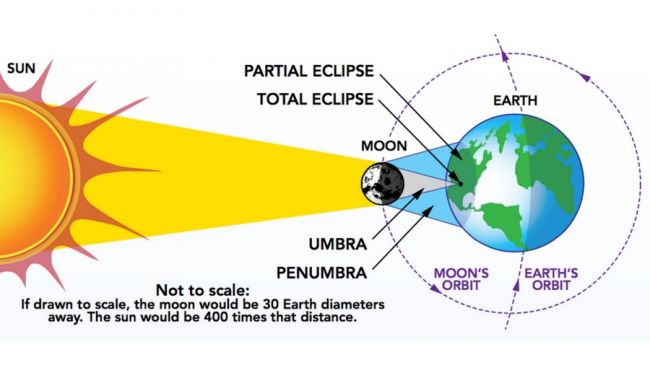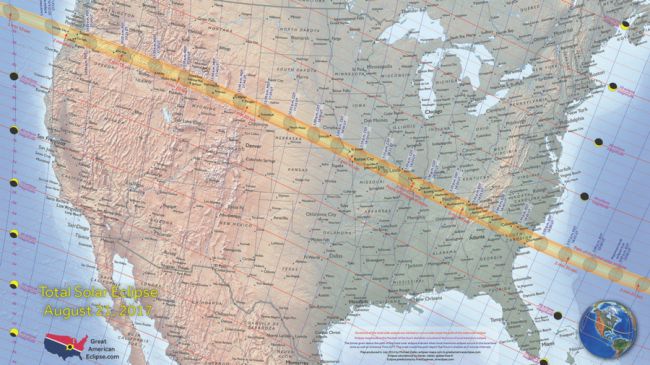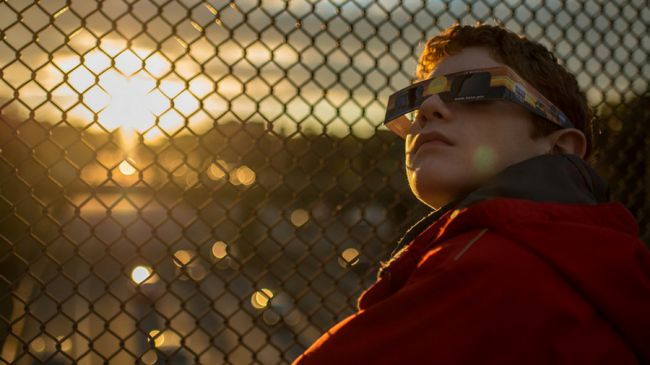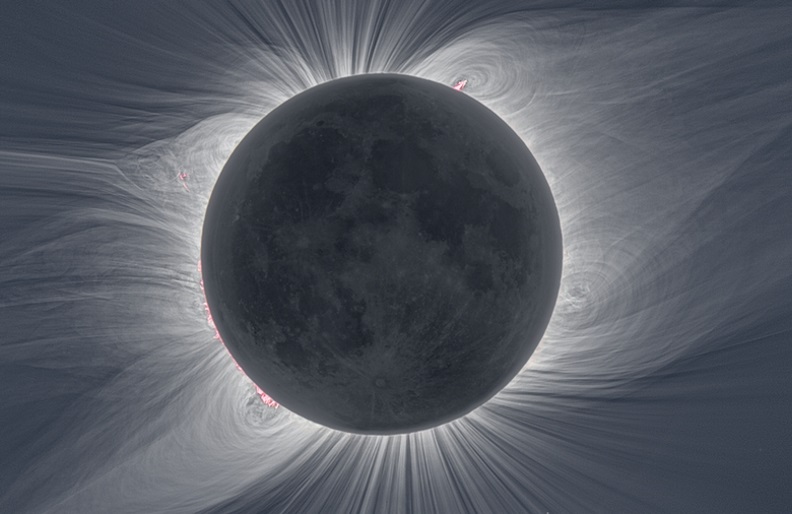Nature’s most powerful and most misunderstood science event
Think you’ve seen an eclipse of the Sun? You haven’t. Perhaps you remember some solar eclipse glasses being passed around while you stood outside your school or office, and maybe the light went a bit funny.
What you saw was a partial eclipse, which the entirety of the USA will see on Monday, August 21. However, the real prize is a Total Solar Eclipse, which will be visible only from a narrow 70 mile-wide track in 12 US States, and only for a couple of minutes.
People who’ve seen a Total Solar Eclipse don’t forget it. But it’s a hugely misunderstood event – particularly by journalists – that you need to get to grips with. Why? This is the biggest science event yet in the lives of most North Americans, and it will be the most photographed, video’d, tweeted, Instagram’ed and SnapChatted event of the year.
Facebook might fall over. Seriously, millions of people could travel to watch this. It’s going to be massive, and if you’re in the USA, utterly unmissable.

Why is a Total Solar Eclipse so rare?
It can only happen during the New Moon period, when our satellite passes roughly between Earth and the Sun. So since there’s a New Moon every 28 days, why doesn’t it block the Sun every month? It’s orbit is tilted, so it only occasionally crosses the Sun’s apparent path through the sky (the ecliptic).
That we get to experience eclipses at all is a celestial coincidence; despite the Sun being 400 times bigger than the Moon, it’s also 400 times further from Earth, so both objects look almost exactly the same size to us on Earth. The maths are such that every 18 months there’s an eclipse somewhere on Earth.
What is Totality?
A Total Solar Eclipse is not about darkness in the day, it’s not about astronomy, and you don’t actually need solar eclipse glasses to see and experience what it’s all about if you’re in the right places.
A Total Solar Eclipse is about Totality, a precious few minutes when the Moon precisely fits across the Sun’s disk. Sure, it gets dark, there’s astronomy at play, and you will just have been using solar eclipse glasses to view the preceding partial eclipse phase.
But Totality is something else; with the Sun’s light 100% blocked, you can gaze naked eye at the solar corona, the Sun’s outer atmosphere. That corona, visible as a dynamic, ice-white halo around the Moon, streaks out from the Sun, shimmering like a flag in a breeze.
It billows, it flows, it pulses. Look closely during Totality and you can often see red prominences on its surface; huge explosions of twisted plasma.
For the first time in your life, you get to see our Sun as it really is; a bright, white star like any other, alone in space, and spitting out incredible energy. You get to see the awesome power of nature as the Earth-Moon-Sun system lines-up – with you. And that’s why eclipse-chasers are getting excited about August 21, 2017.

Where can I see Totality?
Anywhere within the Path of Totality, a 70-mile wide track that the Moon’s shadow will race across on August 21. NASA has a great video of the Path of Totality.
Everyone in the USA will get to see some kind of partial eclipse, but the difference between a Total Solar Eclipse and a 99% partial is everything; it’s like the difference between having Super Bowl tickets and listening to the game on the radio, between eating fine food and looking at the menu, or between a peck on the cheek and … well, you can guess the rest.
Of course, you do need a clear sky, and out west is best – says the weather data – so most eclipse-chasers and astronomers are heading for the Path of Totality in Oregon, Idaho, Wyoming or Nebraska.
However, the US population largely lives east of the Mississippi River; the path also crosses Kansas, Missouri, Illinois, Kentucky, Tennessee, Georgia, North Carolina and South Carolina.
GreatAmericanEclipse.com has some fabulous US State maps showing viewing positions, and Xavier Jubier has developed an awesome Google Map. Go make a plan!

Where is the best place to go for the eclipse?
Totality passes through hundreds of places in the USA, from the Painted Hills in Oregon and Wyoming’s Grand Tetons National Park to the bizarre Carhenge in Nebraska, and the cities of Nashville in Tennessee and Charleston in South Carolina.
Mostly hotels are gone, but there are thousands of private campsites and places to park an RV for the eclipse, and it should be possible to drive into Path of Totality in the days and hours before the eclipse.
The best advice is to arrive the day before at least to avoid getting stuck in traffic; don’t plan to drive on August 21. Eclipse cartographer Michael Zeiler at Great American Eclipse has developed some invaluable forecasts for eclipse visitation and traffic hotspots for the August 21 Total Solar Eclipse.
However, clear skies will also be critical, so keep an eye on the National Weather Service’s dedicated eclipse page, and be prepared to move to a new location the day before if cloud is predicted. Successful eclipse-chasing often requires wheels.

What will happen on August 21?
A New Moon will cross the ecliptic – the Sun’s apparent path through the sky – and gradually cover the Sun in about 40 minutes. The, two minutes of Totality.
Everyone will cheer, then go very quiet as they watch the Sun, Moon and Earth line-up with them for two minutes-or-so. Some people will cry. Epiphanies will be had. The Internet will be flooded with images and #EclipSelfies.
Those who were not in the Path of Totality will wonder what all the fuss was about. Those who were will type ‘when is the next eclipse?’ into Google. So …

When is the next eclipse?
Everyone asks the same question after they’ve witnessed their first Totality. The next Total Solar Eclipse is on July 2, 2019, and it can be observed from a cruise ship in the South Pacific, or from Chile and Argentina in South America.
That’s winter in the Southern Hemisphere, so the chances of cloud are high, but the Moon’s shadow will cross near the remote Pitcairn Islands, go straight over the giant telescopes of La Silla Observatory in Chile’s Elqui Valley, and brush the Argentinian capital, Buenos Aires.
The next Total Solar Eclipse in the UK is not until September 23, 2090, though the USA only has to wait until April 8, 2024 for its next tango with Totality.
The long-awaited Great American Eclipse may be imminent, but eclipse-chasers are already making plans for the Great South American Eclipse and beyond.
Jamie Carter is the editor of WhenIsTheNextEclipse.com and author of the USA Eclipse 2017 Camping & RV Guide and the The Great South American Eclipse Travel Guide for July 2, 2019.
This article was originally published by TechRadar. Read the original article.


4 comments